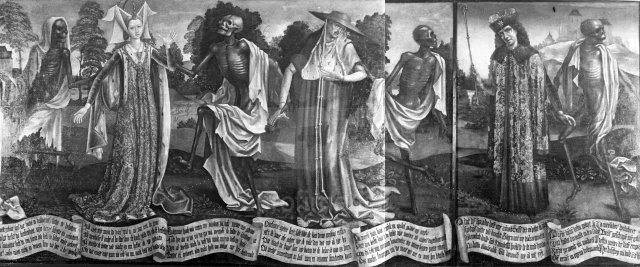
The plague doctor’s mask has a weird steam punk look to it.

The dance of the Black Death shows how the effects of the pestilence was influencing culture. The music became dirge-like and melancholy and, in some areas, music was not played at all. The dancing skeletons were called transi.
 Instrumental Music of the Trecento: Trotto - YouTube
Instrumental Music of the Trecento: Trotto - YouTube
“Trotto” is perhaps the most famous piece of 14th century music to survive. A good 75% of most medieval music collections today will contain “Trotto.”

In Scandinavia—hard-hit by the Black Death losing between one-third and one-half its citizens—they personified the Plague as an old hag called Pesta (sharing the same root as pest and pestilence). She was clothed a black shawl and hood and carried both a rake and a broom. If she came to town with the rake, the pestilence would not be too severe because people would escape through the teeth of rake. If she came to town with the broom, however, all would die. Interestingly, there is a metal rake-like tool called a harrow that farmers used to break up dirt make the soil more porous. It also refers to the area around a funeral bier where the casket and candleholders are placed because it resembles a rake or harrow. The French word for harrow is herce from which we get our word hearse.
